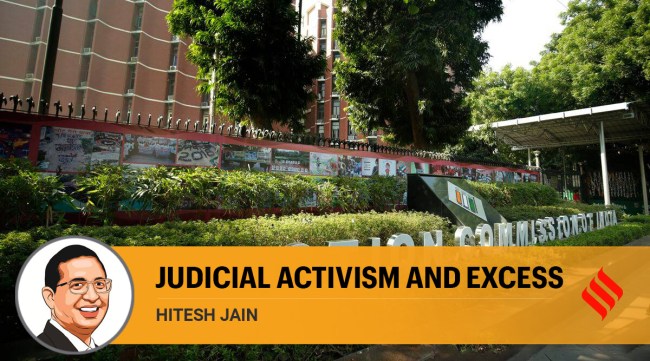Opinion Supreme Court’s Election Commission verdict: When judicial activism writes the law
Will the Court draw for itself a Lakshman Rekha on this aspect? Although, the intentions of the Court while interfering in such matters may be noble, the same may have seemingly unintended consequences
 The Constitution under Article 324 stipulates that the appointment of the Chief Election Commissioners and other Election Commissioners shall, subject to any law, be made by the President.
The Constitution under Article 324 stipulates that the appointment of the Chief Election Commissioners and other Election Commissioners shall, subject to any law, be made by the President. The Supreme Court of India through its judgment dated March 2, 2023, adopted the mantle of the Constituent Assembly, and effectively re-wrote certain provisions of the Constitution. The Court ordered that new rules be followed pertaining to the appointment of the Election Commissioner.
As per these rules, the Election Commissioner is to be appointed upon the advice of a committee consisting of the Prime Minister, the Leader of Opposition, and the Chief Justice of India. Justifying the same, the Court stated that such rules are required to tackle the “lacuna” in regulations pertaining to this subject. However, if we take a closer look at the reasoning of the Court and the provisions dealing with the appointment of Election Commissioners, it is evident that the Court has acted in blatant disregard of the doctrine of the separation of powers.
The doctrine of separation of powers flows from the Constitution itself, which sought to establish three institutional organs, namely the legislature, executive and the judiciary. The Constitution also designated the functions of each of these organs wherein the legislature was to enact the law, the executive to enforce the law and the judiciary to adjudicate upon the law. However, the same Court which once recognised this doctrine as a part of the “basic structure” of the Constitution has turned it on its head.
The Constitution under Article 324 stipulates that the appointment of the Chief Election Commissioners and other Election Commissioners shall, subject to any law, be made by the President. Hence, it is evident that the drafters of the Constitution envisaged that any laws on this aspect shall be drafted by the legislature as it reflects the confidence of the public at large. Pertinently, there was no mention whatsoever about the role of the judiciary in the appointment of either the Election Commissioner or the functioning of the Election Commission itself. The Court appears to be on the wrong footing by stating that it is merely filling up “vacuums” as an alternative system for appointments already exists.
Not only is the Court’s justification of these appointment making powers in its judgment a worrying dismissal of the separation of powers, but it is also contrary to the basic structure doctrine, which the Court itself has continuously championed. To assist our understanding of this situation, it is important to travel back to the Supreme Court’s majority judgment in 2015, which observed that the National Judicial Appointments Commission (NJAC) is unconstitutional as a result of its violation of the basic structure doctrine.
The NJAC sought to introduce a system that would enable a healthy system of checks and balances in the appointment of judges. The Commission was structured in a manner that would assure impartiality, as issues of nepotism, amongst others, in appointments had been raised. However, the judiciary was reluctant to accept this proposal as it was viewed as a threat to judicial independence, and therefore, the “basic structure”. Conversely, the system of collegium-based appointments was reinstated.
The Court’s reasoning in the NJAC matter as compared to its reasoning in present matter pertaining to appointment of the Election Commissioner, evidences two points. First, it leads us to believe that the Court has consciously adopted the principles of basic structure in a manner of convenience. While it sought to fiercely protect its position as per the basic structure doctrine in NJAC, it acted in complete contravention of the doctrine while deciding the present matter. In doing so, it has inserted and superimposed itself in a well-oiled system and thus effectively ignored the principles of the Constitution.
Secondly, the Court has reasserted the alarming notion that it is the sole impartial body that is capable of ascertaining the best interests of the country.
By doing so, it has undertaken to create judicial supremacy over all three constitutionally created wings. Through this practice, the Court has undermined the legislature and the executive, including their powers, their roles, and the duties they owe to the Indian people. This present trend of staking claim on institutions, stemming from the perception that the Court must play a role in every aspect of the executive’s functioning to ensure bipartisanship, is concerning. What is also concerning is the tendency of judges to rewrite the law.
To conclude, one wonders as to what extent will the Court continue to intervene in the functions of the executive. Will the Court draw for itself a Lakshman Rekha on this aspect? Although, the intentions of the Court while interfering in such matters may be noble, the same may have seemingly unintended consequences. Therefore, it might be suitable for the Court to give judicial restraint a fair chance as well.
The writer is managing partner, Parinam Law Associates






